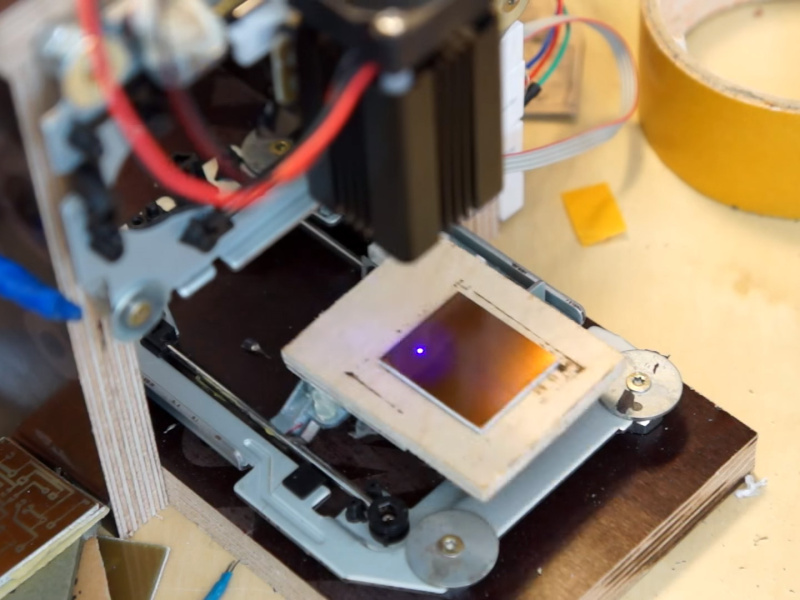Laser engraver based on CD-ROM and Arduino mega parts

A YouTube user with the nickname NeumiElektronik used old CD-ROM drives (servo drives and some other details), a laser diode of 150 mW and 405 nm and an Arduino mega to create a laser engraver. The central platform moves under the control of Arduino, and the laser burns on the surface the details of the circuit and the patterns given by the master. In this case, the most interesting use of such a mechanism is the creation of printed circuit boards with a photoresist.
The laser removes parts of the film, and the circuit is then etched in the usual solution. The result is a near-perfect small PCB. The author of the project reports that he spent about $ 61 dollars on everything about everything. He took all other details from his storerooms or simply found them. The engraver works with materials such as paper, leather, plastic, wood, foam rubber. To work with each type of material, you must set the exposure time for the laser.
Managing software Neumi wrote independently, wanting to explore the very concept of a laser engraver. The software sends raster scans to the Arduino mega, and then the Arduino controls the laser itself and the drives of the mechanical platform. The entire source package and device schema are available on GitHub . The author himself says that there is nothing difficult for a person, at least a little versed in electronics.
')
Caustic soda is used to wash the photoresist (it is said that you can even use the Mole pipe cleaning agent, which includes NaOH), and sodium persulphate is used for etching the board itself. All this is shown in the video, as well as the further use of the board created using this system.
The mechanism works with a working area of 32 * 32 mm. The resolution is 100 pixels per cm. Complete processing of such an area takes 10 minutes. This is not a record figure at all, but rather well, plus if you take into account the cost of the system, then its advantages become quite obvious.
Source: https://habr.com/ru/post/391789/
All Articles